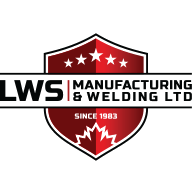Best Practices for Food-Grade Fabrication
Food-grade fabrication is essential in ensuring that equipment and facilities used in the food industry meet stringent hygiene and safety standards. This involves constructing, installing, and maintaining equipment that comes into contact with food products. Following best practices in food-grade fabrication is crucial to maintain the highest food safety standards. As a leading provider of fabrication and welding services, the LWS Manufacturing & Welding team knows that attention to detail is paramount in food-grade fabrication services.
1. Choosing the Right Materials
Selecting the appropriate materials is the cornerstone of food-grade fabrication. Stainless steel, particularly grades 304 and 316, is favoured for its corrosion resistance, durability, and non-reactivity with food substances. These materials also resist pitting and corrosion from food acids and cleaning chemicals. Additionally, certain food-safe plastics and ceramics can be used, provided they meet food safety standards and are approved for contact with food.
2. Ensuring Hygienic Design
Hygienic design minimizes areas where food residues can accumulate, and bacteria can thrive. This involves creating equipment with smooth, polished surfaces that are easy to clean and free of sharp corners, crevices, and complex geometries. Sealed and polished joints and welds prevent food particles from getting trapped, reducing contamination risks and facilitating thorough cleaning.
3. Implementing Proper Welding Techniques
Welding quality is crucial in food-grade fabrication. Welds must be smooth, continuous, and free of cracks or voids to avoid contamination. Techniques such as TIG (Tungsten Inert Gas) welding produce high-quality welds ideal for food-grade applications. Post-weld treatments like polishing and passivation restore the corrosion resistance of welded areas, ensuring long-term durability and safety.
4. Adhering to Regulatory Standards
Compliance with regulatory standards ensures equipment meets the necessary safety and hygiene criteria. Organizations like the FDA (Food and Drug Administration) set stringent guidelines for materials and processes. These standards provide specific requirements for design and fabrication. Adherence to these standards ensures legal compliance and consumer safety.
5. Regular Maintenance and Inspection
Ongoing maintenance and regular inspections are vital to maintaining equipment hygiene and functionality. Regular cleaning, sanitization, and detailed inspections can identify potential issues early. Establishing maintenance schedules based on equipment type and usage ensures consistent performance. Thorough documentation of maintenance and inspections is crucial for compliance and traceability, ensuring a continuous commitment to food safety.
For further information on our welding and metal fabrication offerings or to discuss the specifics of your project, contact the dedicated professionals at LWS Manufacturing & Welding. You can easily contact us via our online form. We are happy to answer any questions you may have about our services.




